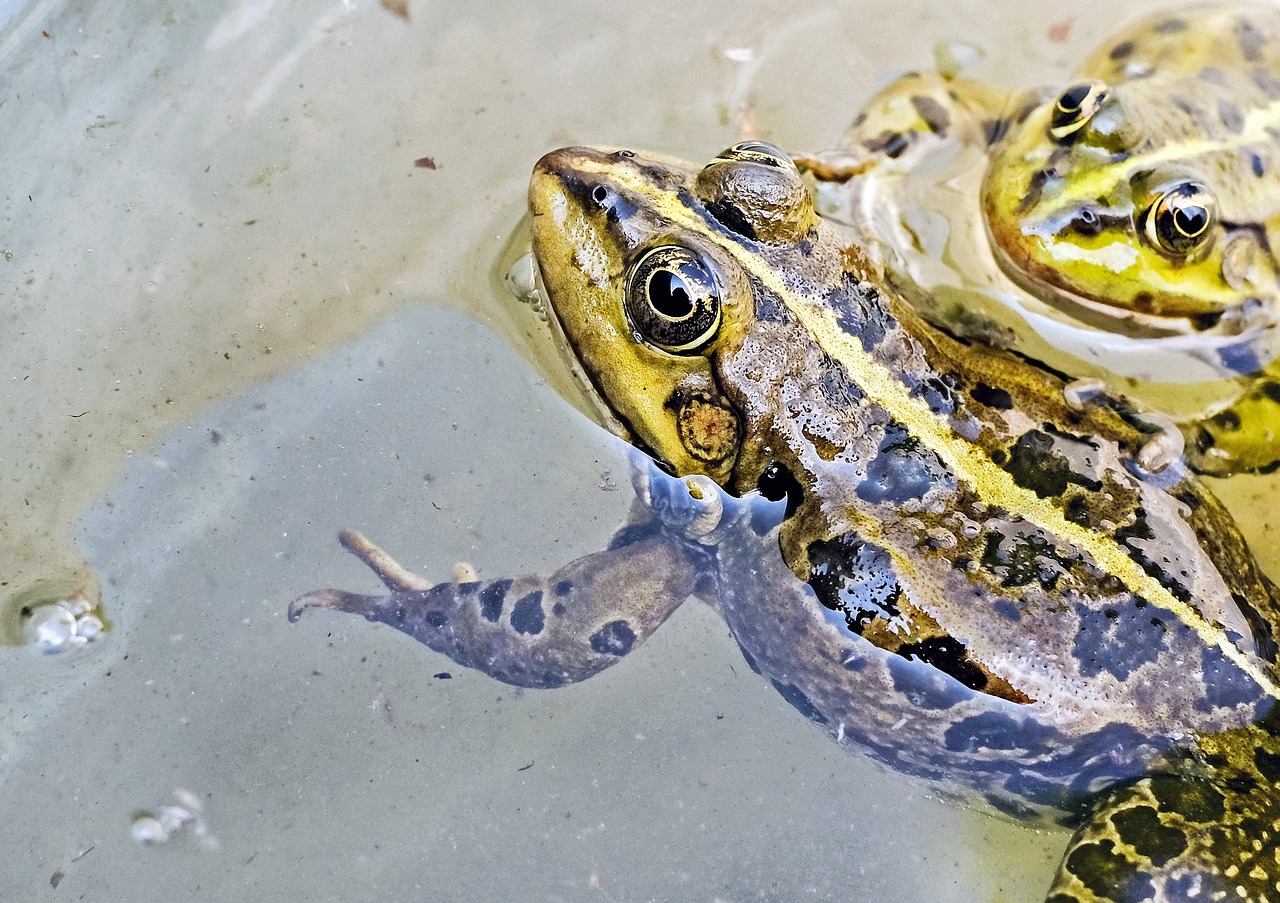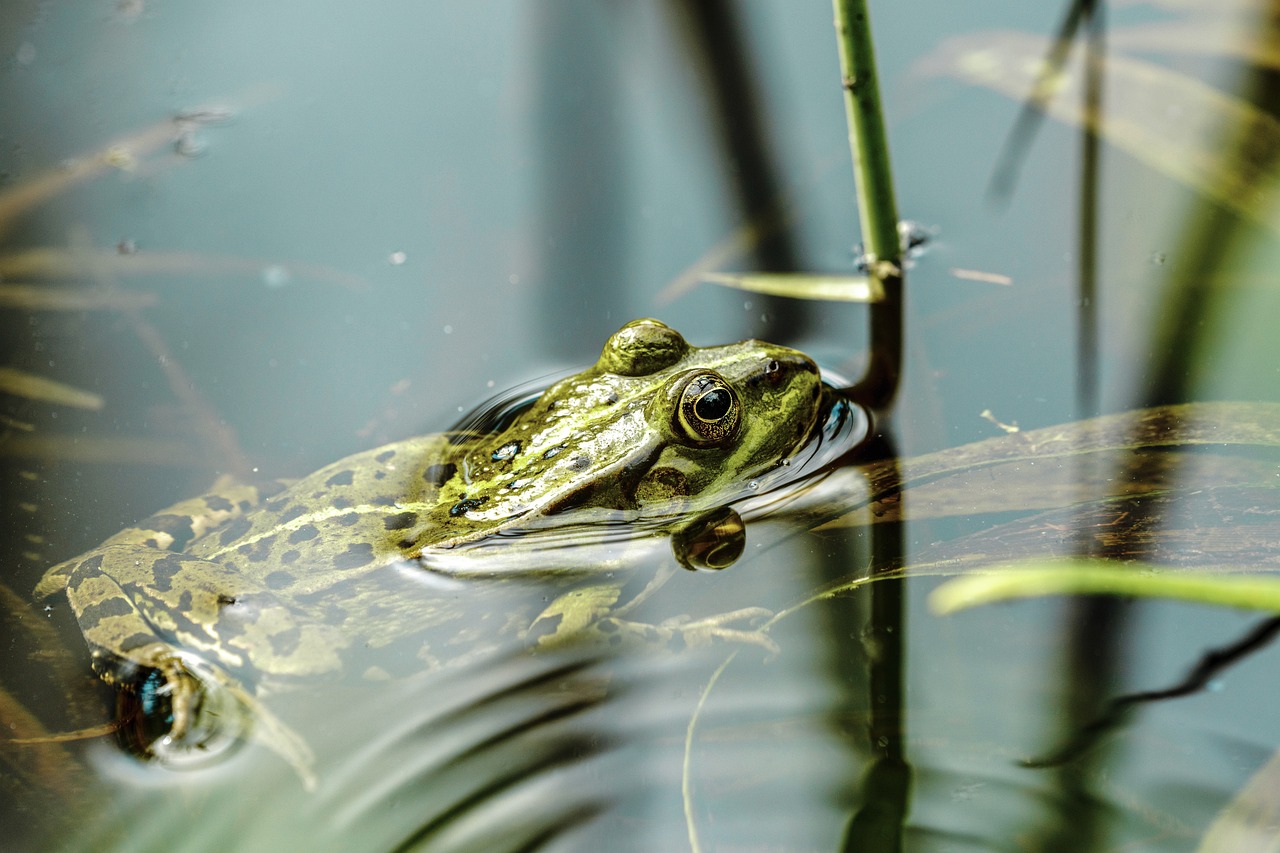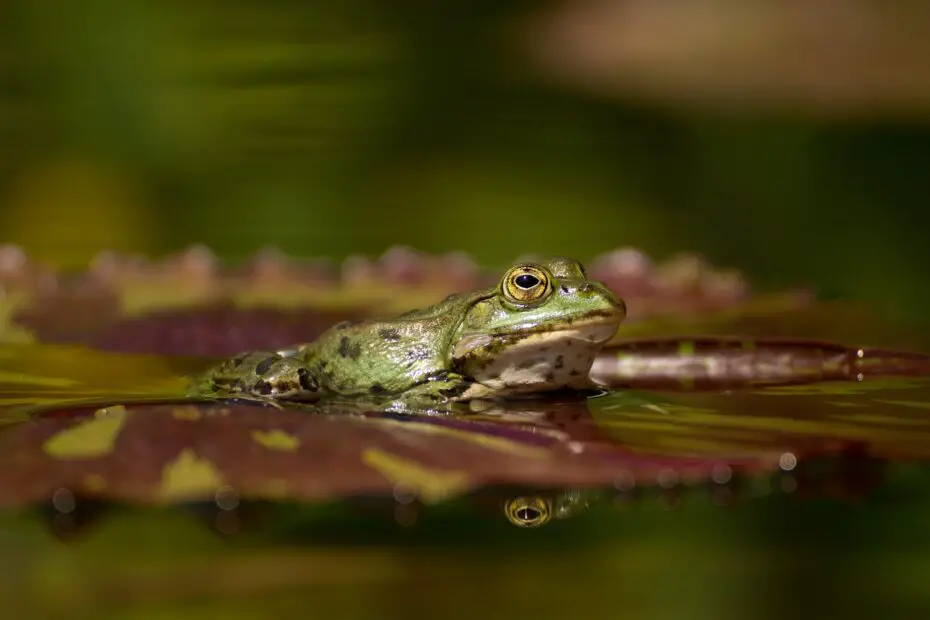Frogs, with their incredible diversity and adaptability, have captivated human fascination for centuries. These amphibians, which straddle both aquatic and terrestrial environments, possess unique respiratory adaptations.
Do Frogs Have Gills? This article explores the intriguing world of frog respiration, including their anatomy, behavior, and their ability to breathe in various environments.
You may also want to know what frog poop looks like.
Frog Anatomy and Adaptations
Frogs are remarkable creatures with a unique set of physical characteristics that make them well-suited for their semi-aquatic lifestyle. Their streamlined bodies, long hind legs, and specialized breathing mechanisms are some of the adaptations that enable them to survive in diverse habitats.
Amphibians, including frogs, possess thin, moist skin that plays a vital role in gas exchange. Their skin is permeable to gases, allowing them to absorb oxygen and release carbon dioxide directly through their skin. This adaptation is especially crucial for frogs when they are submerged in water.

Frog Respiration on Land
While frogs are amphibians, they primarily live on land. In terrestrial environments, frogs rely on their lungs for respiration, much like most other air-breathing animals. When on land, frogs breathe by expanding and contracting their throats and mouth, which creates a pressure difference that draws air into their lungs.
Aquatic Frog Species
Not all frogs inhabit land; some have adapted to a completely aquatic lifestyle. These aquatic frog species are equipped with unique adaptations that enable them to thrive in water-based habitats. For instance, the fully aquatic African dwarf frog and the webbed feet of the American bullfrog are adaptations that aid in their aquatic existence.
Gills in Frog Tadpoles
During their early life stage as tadpoles, some frogs have gills. Tadpoles hatch from eggs laid in water, and their gills allow them to extract oxygen from the surrounding water. These gills serve as a temporary respiratory organ during the tadpole phase until they undergo metamorphosis into adult frogs.
Do Frogs Have Gills?
There is a common misconception that frogs can breathe underwater due to their association with aquatic habitats. However, frogs cannot breathe underwater like fish. Unlike fish, frogs lack gills that are capable of extracting oxygen from water. As such, frogs must surface to breathe air periodically.

Frog Respiration Underwater
While frogs cannot breathe underwater, they possess fascinating adaptations that allow them to cope with submerged conditions. Their skin, which is highly permeable to gases, plays a vital role in gas exchange while they are submerged. Oxygen in the water diffuses through their skin and into their bloodstream, while carbon dioxide is released from their body.
Breathing While Submerged
Observing frogs underwater reveals unique behaviors as they balance their oxygen requirements. To maximize oxygen uptake, frogs may remain still or move slowly to reduce energy expenditure and minimize the need for oxygen. They may also resort to breath-holding to conserve oxygen in low-oxygen environments.
Respiration Changes During Metamorphosis
The metamorphosis from tadpole to frog is a transformative process that involves significant changes in their anatomy and physiology. As tadpoles undergo metamorphosis, they experience a shift in their breathing mechanism, transitioning from gill-dependent respiration to lung-based respiration as they become adult frogs.
Frog Respiration in Different Environments
Frogs encounter various environmental challenges in their diverse habitats, including changes in temperature, humidity, and oxygen availability. Their ability to adapt to these different environments reflects their exceptional survival strategies and capacity to thrive in both terrestrial and aquatic settings.
The Importance of Healthy Habitats
The well-being of frogs and their respiration heavily relies on the health of their habitats. Environmental factors, such as pollution, deforestation, and habitat destruction, can negatively impact frog populations. Conservation and preservation efforts are essential to maintain healthy ecosystems and ensure the survival of these fascinating amphibians.
Fascinating Frog Facts
As we delve into the world of frog respiration, let’s explore some fun and unique facts about these adaptable amphibians. Did you know that the smallest frog in the world, the gold frog, can fit on a dime? Or that some frog species can change colors to blend into their surroundings?
Conclusion
Do Frogs Have Gills And Can They Breathe Underwater? Frogs exemplify nature’s ability to adapt and thrive in different environments. Their unique respiratory adaptations, from lung-based respiration on land to oxygen uptake through their skin underwater, showcase the marvels of evolution. Understanding the intricacies of frog respiration deepens our appreciation for these remarkable creatures and their vital role in maintaining healthy ecosystems.
FAQs About Frog Respiration
- Can frogs stay underwater for a long time? While frogs can stay submerged for extended periods, they eventually need to surface to breathe air. Their ability to stay underwater is influenced by factors such as species, temperature, and oxygen availability.
- Do all tadpoles have gills? Yes, all tadpoles have gills, which allow them to extract oxygen from water during their aquatic phase. As tadpoles undergo metamorphosis into adult frogs, their gills are replaced by lungs.
- How do frogs breathe through their skin? Frogs breathe through their skin via cutaneous respiration. Their skin is highly permeable to gases, such as oxygen and carbon dioxide, enabling gas exchange with the surrounding environment.
- Do all frog species use the same respiration methods? While most frogs rely on a combination of lung-based and cutaneous respiration, certain species, such as fully aquatic frogs, primarily rely on cutaneous respiration due to their lifestyle.
- Can frogs survive in polluted waters? Frogs are sensitive to environmental changes, and pollution can be harmful to their health and survival. Clean and healthy habitats are crucial for their well-being. Conservation efforts are vital to protect their ecosystems and promote frog populations.
